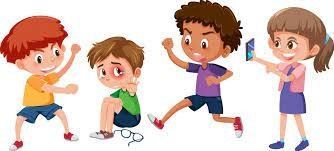Why Bullies Bully
60% of school shooters reported being bullied in person or online.

Some may consider bullying a regular thing in society, but it is no laughing matter. According to statistics, here are some sobering facts about bullying:
· 46% of teens report being cyberbullied at least once.
· 60% of school shooters reported being bullied in person or online.
· Nearly 25% of LGBQ+ students were bullied at school.
· 22% of students get bullied during each school year
· 43%-48% of students reported that they would not intervene in bullying.
· At 79%, verbal harassment is the most common bullying at school.
· 84% of bullying in the UK happens through devices such as mobile phones or laptops.
· At 53.8%, Hispanics are bullied the most of all races at work.
· 30% of US workers are bullying victims.
· Rude name-calling is the most common form of child cyberbullying (32%).
Even though laws exist to address bullying, they do not stop it from occurring. Youths who act aggressively toward others do so for a multitude of reasons. And there are different types of bullying. Among them are verbal, sexual, prejudicial, and physical. Not to mention cyberbullying. Yet what leads one youth to try to show superiority over others comes from different motivations. At least from the youth’s perspective, these different motivations appear authentic. And their perspective helps us to understand better how to develop prevention programs for youths.
In Psychology in the Schools, Robert Thornberg published an article, Schoolchildren's social representations on bullying causes, in 2010. In it, he discussed his research on school-age youths’ social representations of the causes of bullying. He wanted to look at how much bullying occurred and how youths perceived it. And discussed it in their own words. They came up with six overall causes why bullies bully. In order of most to least frequent, they are:
Reaction to Deviance- as the most prevalent cause, the victim was seen as different, odd, or deviant. Just not fitting in with everyone else meant a youth was a target of bullies. It could be appearance, behavior, characteristics such as odd or nerdy, or disabilities.
Social Positioning-youths saw this as bullying to reach status in a school or group’s pecking order. They described three different types. In these cases, those acting aggressively picked youths seen as physically weak, shy, unpopular, younger, lonely, or new.
· Bullying for status was for kids who wanted to be the coolest, the toughest.
· Bullying for power occurred when youths were struggling for authority. About being the boss.
· Bullying for friendship meant acting aggressively to win or keep friends.
Work of Disturbed Bully-youths perceived an aggressive youth as someone who has problems. They had emotional or behavioral issues like attention problems, bipolar, and poor impulse control. Or the aggressor was a representation of trouble at home. Alcoholism. Violence. Poverty.
Revengeful Activity-youths saw this as an excuse to blame the victim for some harm that occurred to the aggressor. They were snitched on. Their little brother got in trouble. They felt ridiculed. A youth told the teacher about them. An eye for an eye mentality.
Amusing Game-youths describe this happening when the aggressor decides they’re bored. They want to have fun at someone else’s expense. The youth at recess finds another youth and pushes them, ridicules them, or does some other activity to make themselves feel better without caring about the collateral damage.
Social Contamination-youths say this occurs in a group format. Youths talked about how a student would be excellent and kind to them. But the comments changed once they were in a group and wanted to be part of the group. This shows how youths “change their stripes” depending on who they’re around.
Understanding this behavior, which is aggressive in nature, helps teachers, as well as behavioral health professionals, deal with youths acting like bullies. They’re not this way all the time. But in social or emotional conditions, they need to prove themselves at the demise of another. Developing assertive skills for youths helps them avoid bullying or being bullied.
PRAXES offers training on courses for BBS CEUs, among them Bullying Prevention and Early Intervention. For more information on training for your organization, please get in touch with us.




